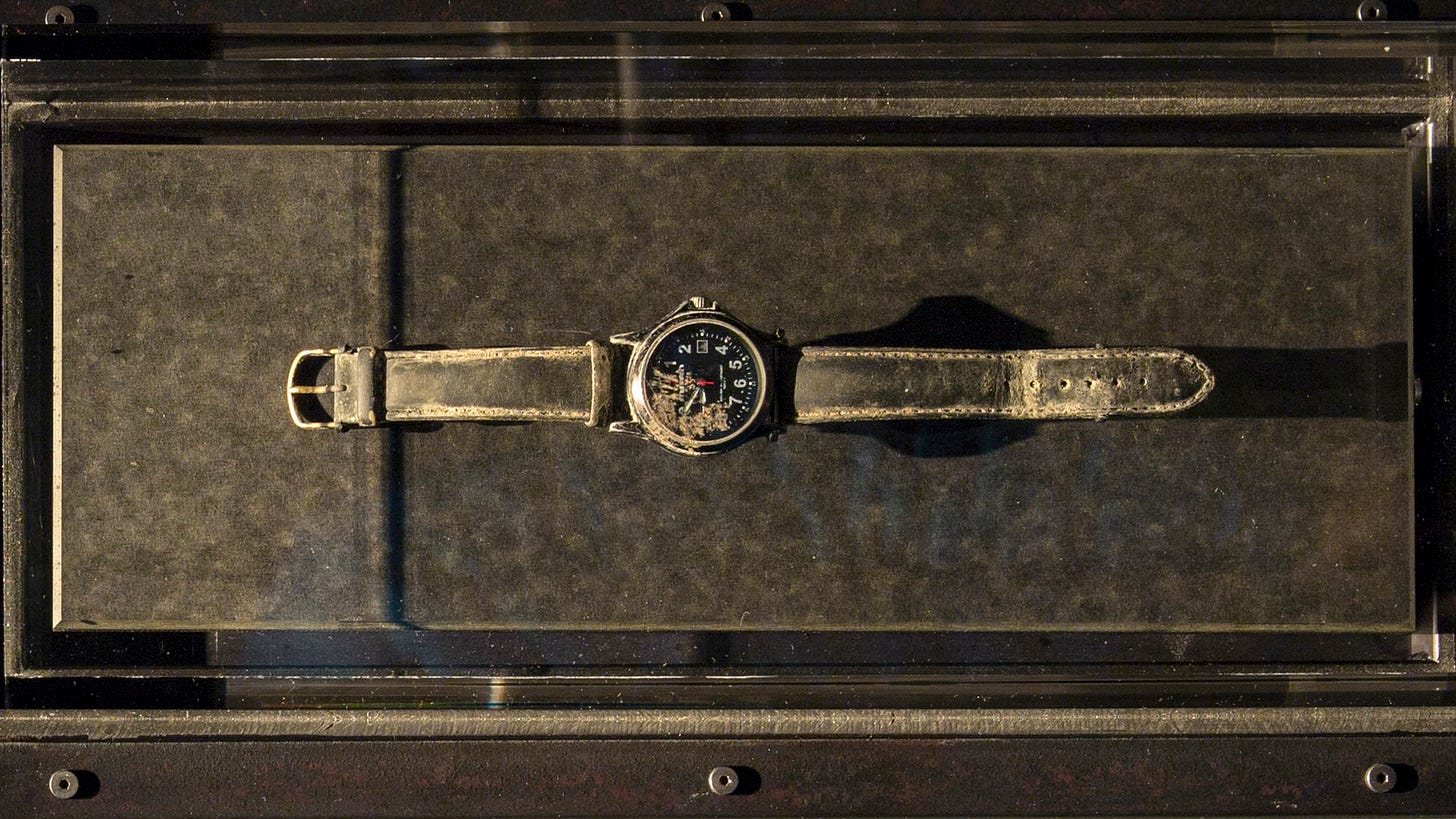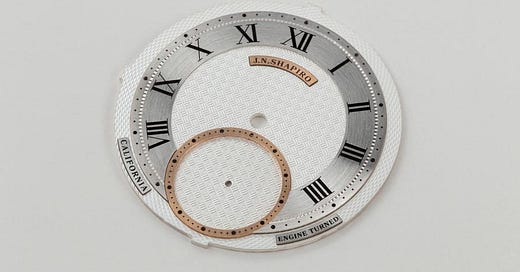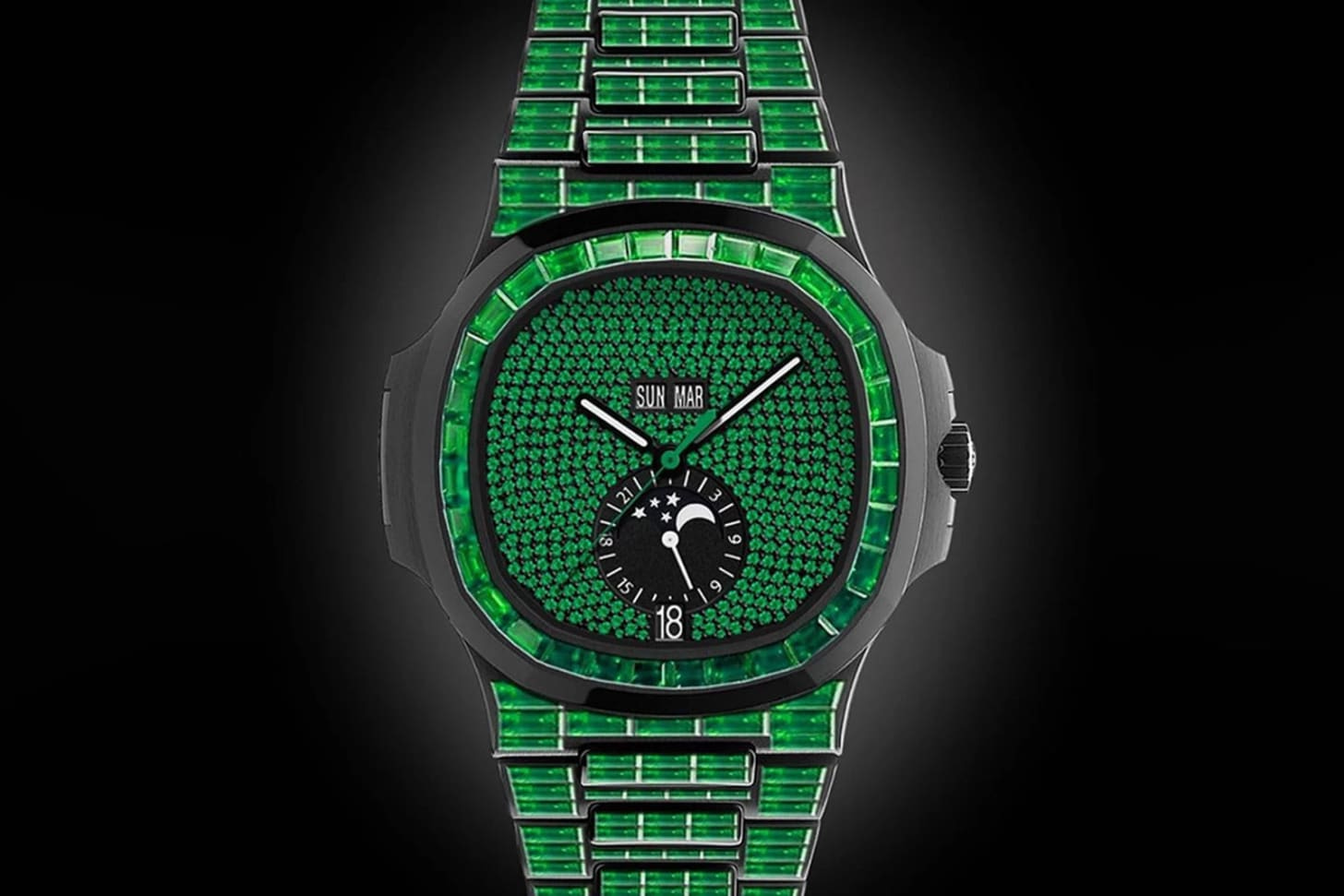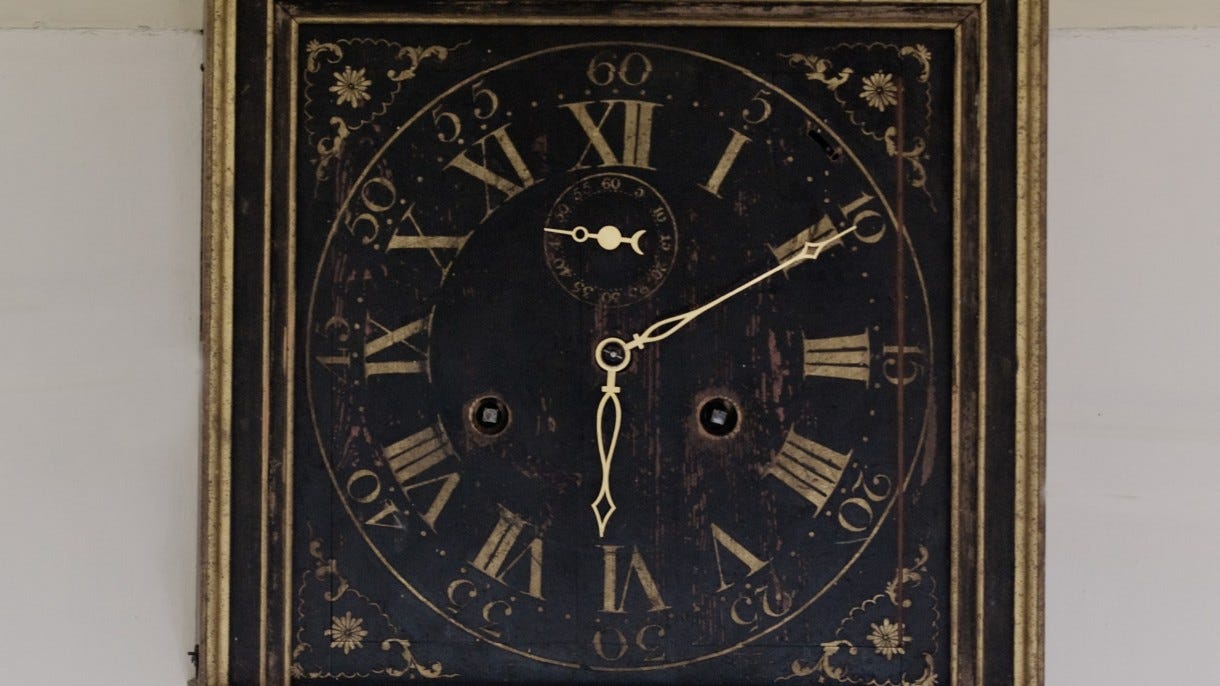From traditional techniques of dial finishing to the Kanye-Drake beef, Rescapement is back from an extended summer break and showing some range. Subscribe now to get Rescapement in your inbox every Sunday:
The Art of Dial Finishing
I wrote an in-depth piece about dial finishing over on A Collected Man. It’s probably the recent piece I’m most proud of — it took a lot of research for me to learn about and really understand the history and techniques of the various dial finishing methods highlighted in the article. From the intro:
“The dial. It’s the face of the watch, the element of the timepiece we look at most often, and the component that we form an emotional attachment to. Just a few microns thick, these watch dials carry the distinctive styles of each watchmaker, acting, in many senses, as the face of the brands themselves.
Like many other aspects of watchmaking, these dial finishing techniques lie at the intersection of art, human skill, and engineering. Before an artisan begins shaping a dial, it is a mere metal “blank” of highly polished brass, silver, or other metal. The application of finishes then adds texture, pattern, and structure to the dial, transforming the unmarked metal into a work of art through a combination of artistry and innovation. Techniques such as guilloché have existed for centuries, they have been carefully handed down from one to the next, with the current generation just as proud to carry on the tradition as they are keen to ensure it is passed on.”
Much of the focus is on guilloche (engine turning), the perhaps the most traditional method of dial finishing. It’s process of using a sharp cutting tool to carve geometric patterns into metal. For this, I drew on the expertise of LA-based watchmaker Josh Shapiro, who was very patient in answering my questions about guilloche. For those interested in learning more, I highly recommend Shapiro’s HSNY lecture (in addition to Roger Smith’s series explaining the technique). One of my favorite quotes from Shapiro, which gets to the heart of why I enjoyed learning about these techniques so much:
Referencing the early guilloché work of Breguet, Shapiro had this to say: “What I find neat about it is that [between] what the engine turner did and what I’m doing now, we could probably switch machines and figure out what the other is doing fairly quickly. The basics of these machines are timeless.” It is this lineage of artisanry that continues to fascinate and captivate practitioners and collectors alike, allowing engine turning to experience a Renaissance in the 21st century.
The article also covers hand hammering, where I spoke to AnOrdain’s Lewis Heath, whose brand is bringing all sorts of traditional techniques into the modern era at accessible prices.
Read the full article on A Collected Man.
The Kanye-Drake Beef, Explained through Their Watches
Now, something less intellectual (it’s called range).
Of course, with the drop of both of their albums over the past two weeks, the beef between rap’s two biggest stars has been re-ignited. This iteration of the beef was first triggered when Drake dropped a few Kanye-directed diss lines in his feature verse on Trippie Redd’s “Betrayal”. Soon after, Kanye responded by posting a screenshot of a group chat, which many think included Drake. Most people focused on the center of the post, a photo of Joaquin Phoenix as the Joker along with a threat that Kanye seemed to direct at Drake himself.
But cut off at the top of the screenshot is Kanye’s previous text, where he seems to be asking his one-time close friend and creative collaborator, Virgil Abloh, “where my green watch?”
It turns out this question, and Kanye and Drake’s watches, reveal more about their beef than most of us had ever realized. Read the full article:

The Timepieces of Thomas Jefferson: A Founding Father’s Fascination with Horology
A look at Thomas Jefferson’s obsession with horology though a few of his clocks, from Eric Wind (with an assist from Charlie Dunne):
“While modern society takes for granted the free availability of timekeepers around us, for Jefferson and the American founders, time was an expensive, but critical and luxurious tool for managing their estates and affairs.
President Jefferson was not only an admirer of haute horology, he was also a patron to highly-skilled watchmakers of the era. One of the most prominent timekeepers he commissioned outside of America was a Napoleon clock from renowned watchmaker Louis Moinet. He was among the high-profile individuals eligible to qualify as patron to the French watchmaker. Louis Moinet’s legacy in watchmaking is most notably distinguished by his invention of the chronograph and close relationship with Abraham-Louis Breguet.”
To me, the most fascinating clock is Jefferson’s Great Clock, which resides at Jefferson’s Monticello estate, with a different face facing inside and outside. Thomas, you saucy two-faced yankee, you.
Read A Founding Father’s Fascination with Horology.
September 11, 2001: The Day Time Stopped

A beautiful piece reflecting on 9/11 through the eyes of one survivor, Thomas Canavan. “These days,” Canavan says, “I don’t wear a watch. I really don’t worry about time anymore.” Read the article on Hodinkee.
As always, thanks for subscribing. I’ve been busy doing summer things the past few weeks and writing articles for other publications, but we’ve got some great articles this fall for Rescapement. I love writing for other outlets, but Rescapement is the place where I’m able to work through ideas and generally bulls**t, and it often leads to some of my favorite pieces (and least favorite, to be sure). Anyway, thank you for continuing to follow along. -Tony
—
Rescapement is an independent weekly newsletter about watches, mostly vintage. Subscribe now to get it delivered to your inbox every Sunday:









